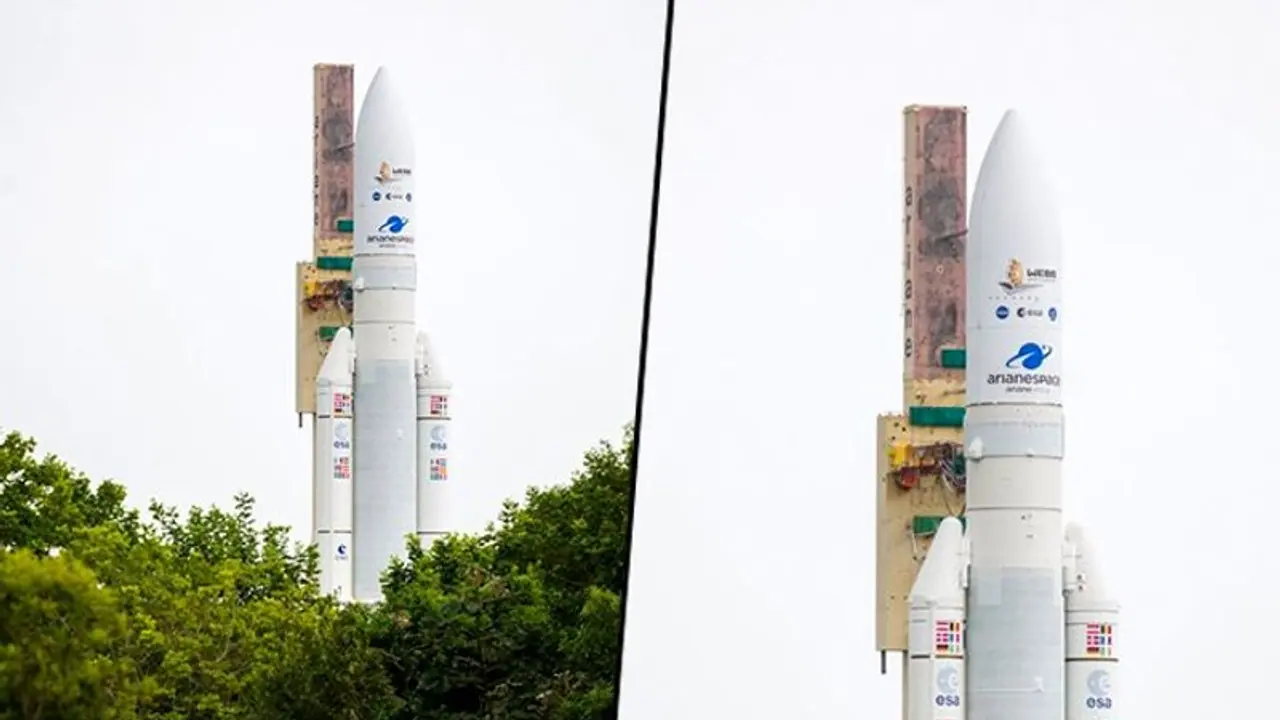The launch, which is slated for 9:20 a.m. (12:20 GMT), will send the telescope on a month-long trek to its distant orbit.
After several delays owing to technical issues, the world's most powerful space telescope is set to launch on Saturday to its outpost 1.5 million kilometres beyond Earth. The James Webb Space Telescope, which has taken three decades and billions of dollars to create, will launch atop an Ariane 5 rocket from the Kourou Space Centre in French Guiana. The launch, which is slated for 9:20 a.m. (12:20 GMT), will send the telescope on a month-long trek to its distant orbit. It is intended to return fresh information that will help scientists learn more about the beginnings of the Universe and Earth-like planets beyond our solar system.

Webb, named for a former NASA director, follows in the footsteps of the iconic Hubble — but with the purpose of showing mankind what the Universe looked like around 14 billion years ago. Webb project co-founder John Mather discussed the telescope's remarkable sensitivity on social media. All of that power is required to detect the faint glow released billions of years ago by the earliest galaxies and stars to develop.
The telescope is unsurpassed in terms of size and complexity. Its mirror is three times larger than Hubble's, measuring 6.5 metres in diameter and made up of 18 hexagonal components. It is so huge that it had to be folded to fit inside the rocket. After the rockets have carried Webb 120 kilometres, the craft's protective nose, known as a "fairing," is removed to lessen the burden.
Also Read | Indian Americans in NASA every Indian is proud of; Dr Anil Menon is the latest in the list
Arianespace constructed a special decompression mechanism to safeguard the fragile equipment from pressure fluctuations at that point. Around 27 minutes after launch, the ground crew will learn whether the first stage of the flight was successful. When it arrives at its destination, the difficulty will be to deploy the mirror and a tennis-court-sized sun cover fully. That intimidatingly intricate procedure will take two weeks and must be faultless for Webb to work correctly. Its orbit will be significantly higher than Hubble's, orbiting the Earth at 600 kilometres since 1990.
Webb's orbit is known as the Lagrange 2 point, and it was chosen in part because it keeps the Earth, Solar, and Moon all on the same side of its sun shield. Webb is scheduled to begin service in June.
